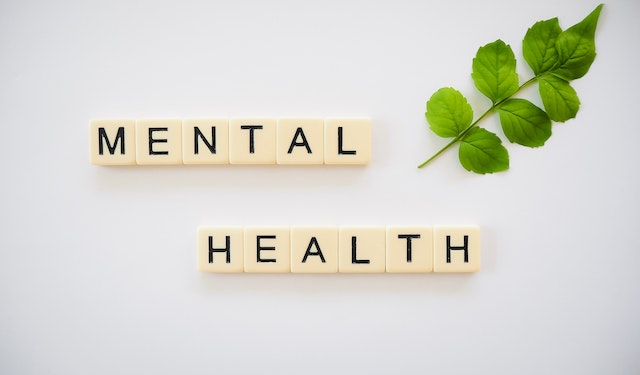
Understanding Mood Disorders: A Comprehensive Guide
Mood disorders are a category of mental health conditions that primarily affect a person’s emotional state. These disorders involve extended periods of excessive sadness, elation, or a fluctuation between the two. Understanding mood disorders is critical for those experiencing these challenges, as well as their families and support networks.
What Are Mood Disorders?
Mood disorders refer to mental health conditions that disrupt an individual’s emotional balance. These disorders can impair daily functioning, relationships, and overall quality of life. They are typically classified into two main types:
- Depressive Disorders: Conditions characterized by prolonged sadness and lack of interest.
- Bipolar and Related Disorders: Conditions involving mood swings from highs (mania) to lows (depression).
Common Types of Mood Disorders
- Major Depressive Disorder (MDD)
- Persistent feelings of sadness, hopelessness, and loss of interest in activities.
- Symptoms include fatigue, changes in sleep and appetite, and difficulty concentrating.
- Persistent Depressive Disorder (PDD)
- Long-term depression lasting for at least two years.
- Symptoms are less severe than MDD but more enduring.
- Bipolar Disorder
- Characterized by extreme mood swings between mania (elevated mood) and depression.
- Types:
- Bipolar I: Severe manic episodes lasting a week or more.
- Bipolar II: Hypomanic episodes with less severe intensity and depressive episodes.
- Cyclothymic Disorder
- Chronic mood fluctuations between mild depression and hypomania.
- Symptoms persist for at least two years but do not meet the criteria for bipolar disorder.
- Seasonal Affective Disorder (SAD)
- Depression triggered by seasonal changes, typically during winter months.
- Linked to reduced sunlight exposure.
Causes and Risk Factors
Mood disorders arise from a combination of genetic, biological, psychological, and environmental factors:
- Genetic Factors: Family history of mood disorders increases susceptibility.
- Neurochemical Imbalances: Irregularities in brain chemicals like serotonin, dopamine, and norepinephrine.
- Trauma and Stress: Life events such as abuse, loss, or financial strain can trigger mood disorders.
- Medical Conditions: Chronic illnesses or hormonal imbalances can exacerbate symptoms.
- Substance Abuse: Alcohol and drug use can contribute to or worsen mood disorders.
Symptoms of Mood Disorders
Mood disorders manifest differently across individuals but commonly include:
- Emotional Symptoms:
- Persistent sadness or feelings of emptiness.
- Irritability or agitation.
- Euphoric or overly excited states (in bipolar disorder).
- Physical Symptoms:
- Fatigue or low energy.
- Changes in sleep patterns (insomnia or oversleeping).
- Appetite changes leading to weight loss or gain.
- Behavioral Symptoms:
- Withdrawal from social activities.
- Difficulty maintaining focus or making decisions.
- Impulsivity during manic episodes.
Treatment Options
Managing mood disorders often requires a combination of therapeutic approaches:
- Psychotherapy:
- Cognitive Behavioral Therapy (CBT): Helps reframe negative thought patterns.
- Interpersonal Therapy (IPT): Focuses on improving relationships and communication.
- Medication:
- Antidepressants (e.g., SSRIs, SNRIs) for depressive disorders.
- Mood stabilizers (e.g., lithium) for bipolar disorder.
- Antipsychotics for severe symptoms.
- Lifestyle Changes:
- Regular exercise to boost mood and reduce stress.
- Balanced diet rich in nutrients supporting mental health.
- Consistent sleep schedule.
- Alternative Therapies:
- Light therapy for Seasonal Affective Disorder.
- Mindfulness meditation and relaxation techniques.
Coping Strategies
In addition to professional treatment, adopting effective coping mechanisms can improve day-to-day life:
- Maintain a strong support system of friends and family.
- Set achievable goals to create a sense of accomplishment.
- Learn and practice stress management techniques.
- Track mood changes to identify triggers and patterns.
- Limit alcohol and avoid drugs.
Helpful Online Resources
For more information, explore these reputable websites:
- National Institute of Mental Health (NIMH): Detailed information on mood disorders and mental health research.
- Mental Health America (MHA): Resources and support for mental health conditions.
- Depression and Bipolar Support Alliance (DBSA): Support groups and educational materials for mood disorders.
- Mayo Clinic: Comprehensive guides on symptoms, diagnosis, and treatments.
FAQs About Mood Disorders
1. Can mood disorders be cured? Mood disorders are treatable but not always curable. With proper treatment, many people manage symptoms effectively and lead fulfilling lives.
2. Are mood disorders hereditary? Genetics play a significant role, but environmental factors and life experiences also contribute.
3. How can I support a loved one with a mood disorder? Offer empathy, encourage them to seek professional help, and educate yourself about their condition.
4. What is the difference between sadness and depression? Sadness is a temporary emotion, while depression is a prolonged, debilitating mental health condition.
5. Can children and teens develop mood disorders? Yes, mood disorders can affect people of all ages, including children and adolescents.
Conclusion
Mood disorders are complex but manageable with the right approach. Early intervention, consistent treatment, and a supportive environment can make a significant difference. Understanding the signs and seeking help is the first step toward recovery.



